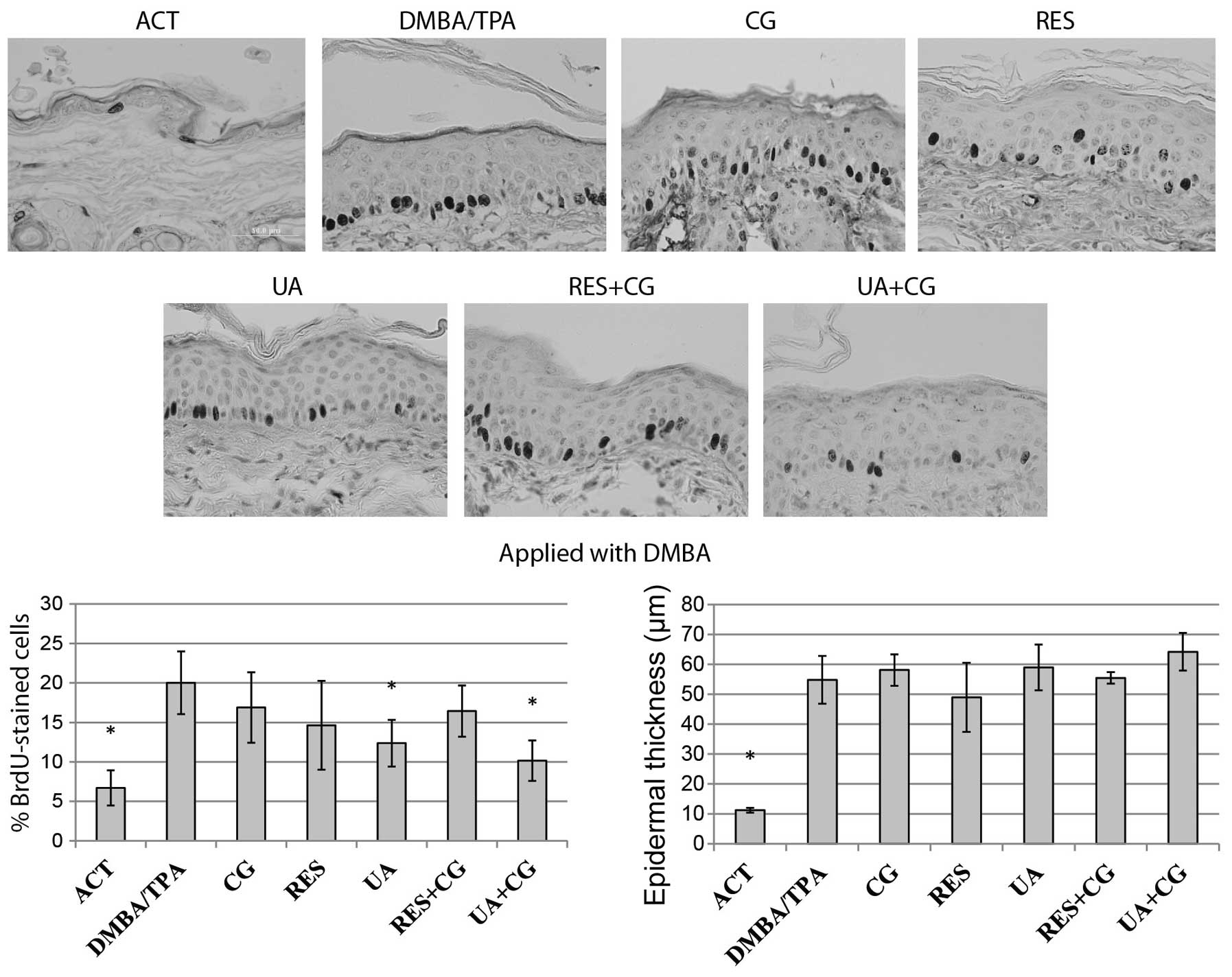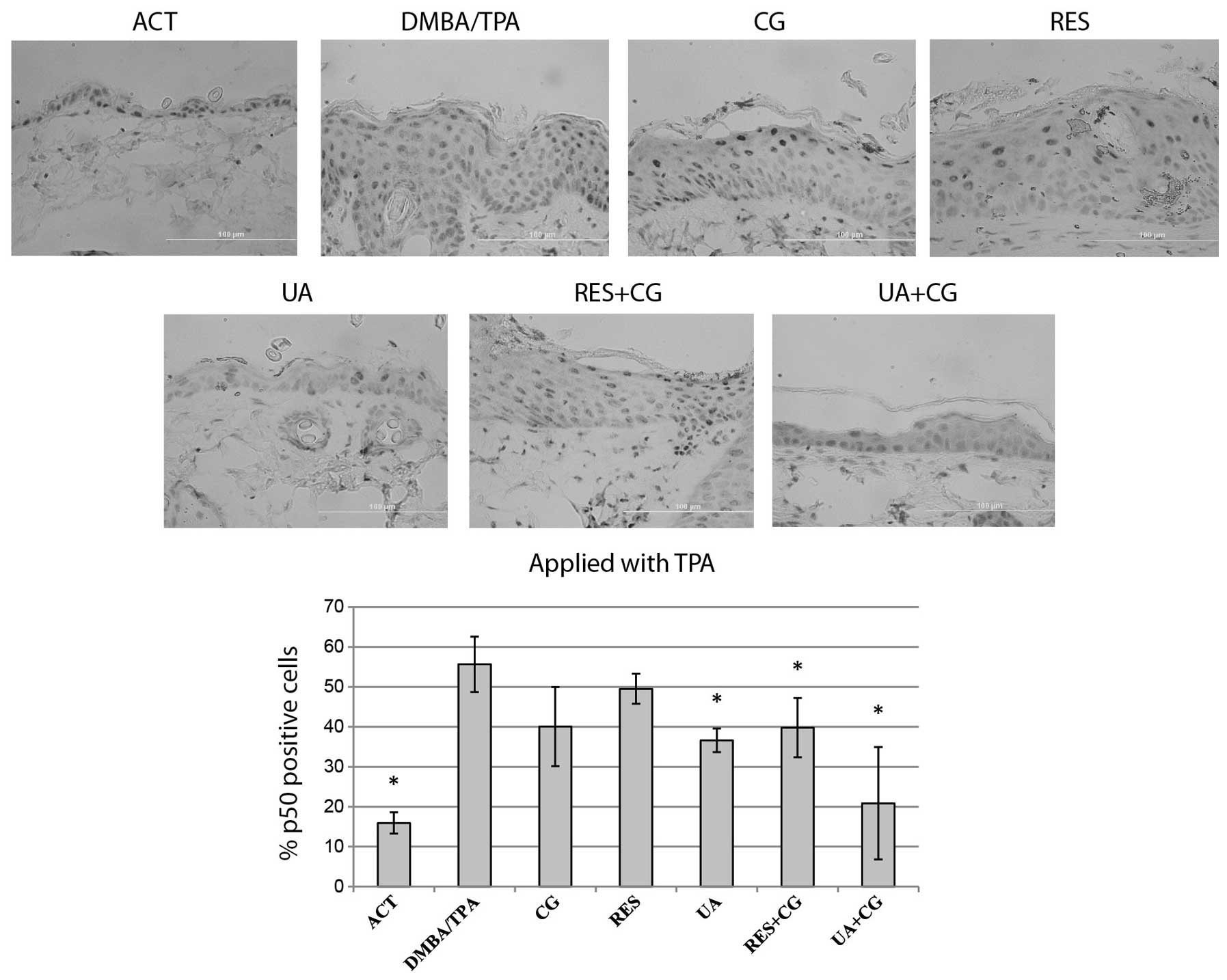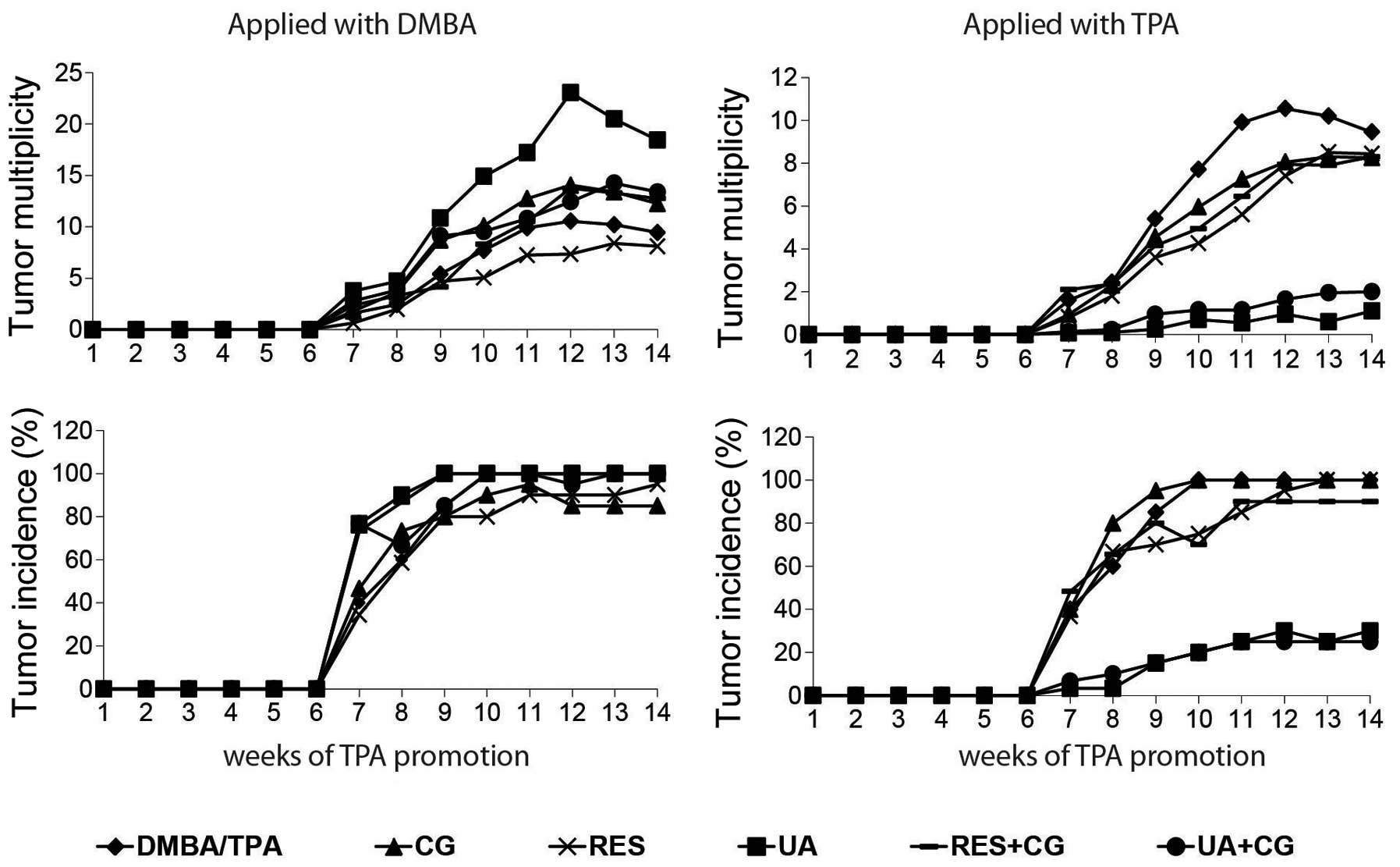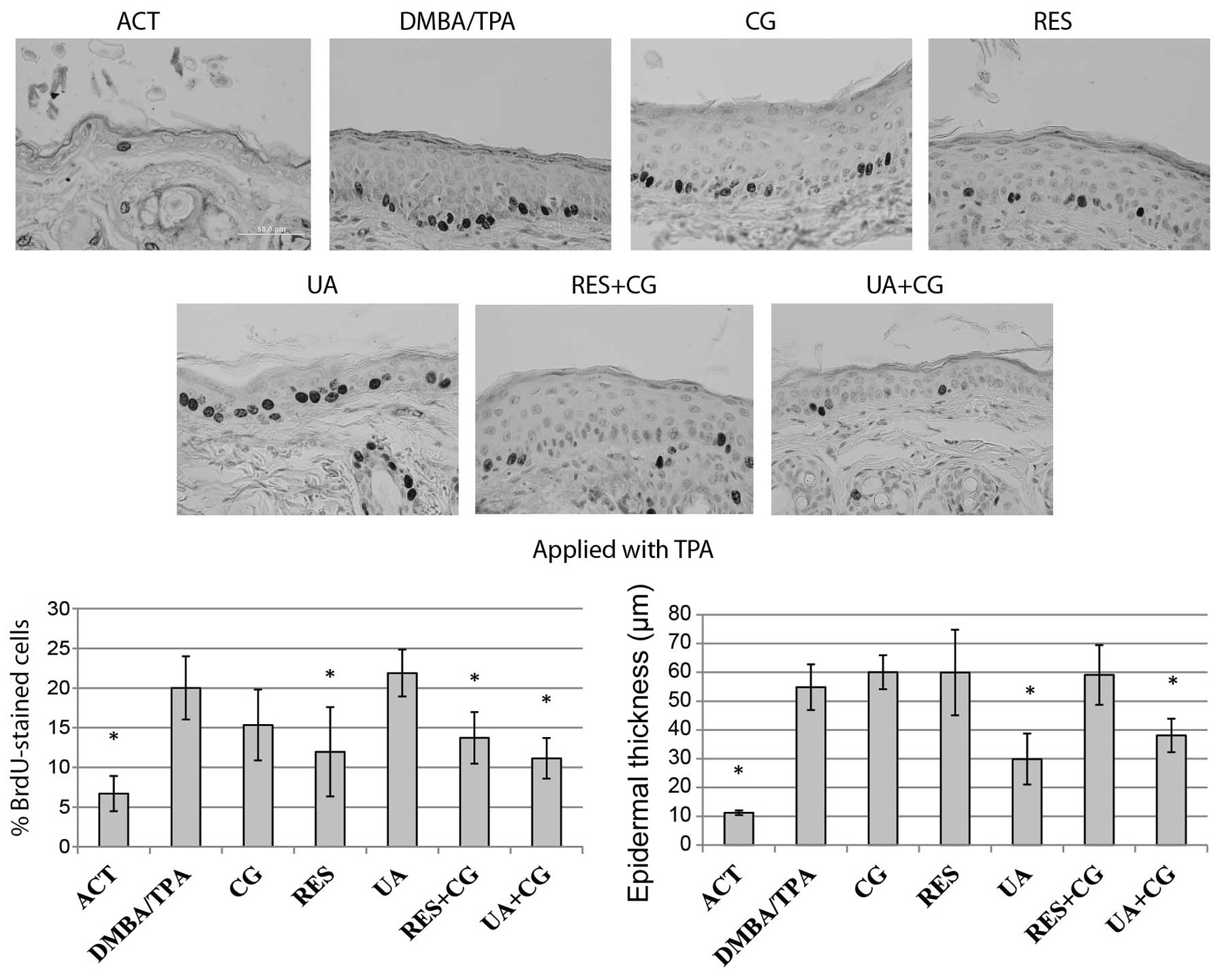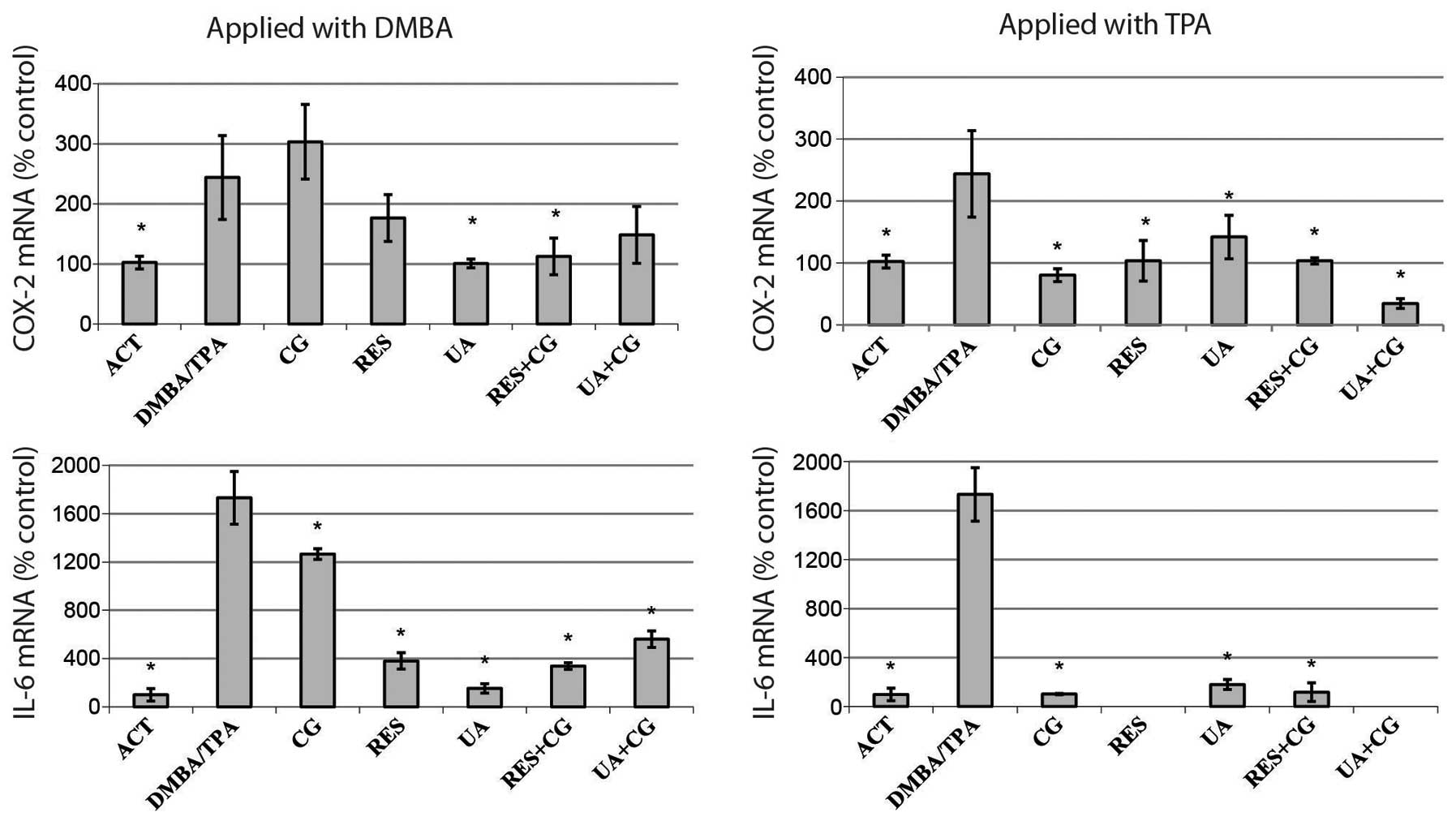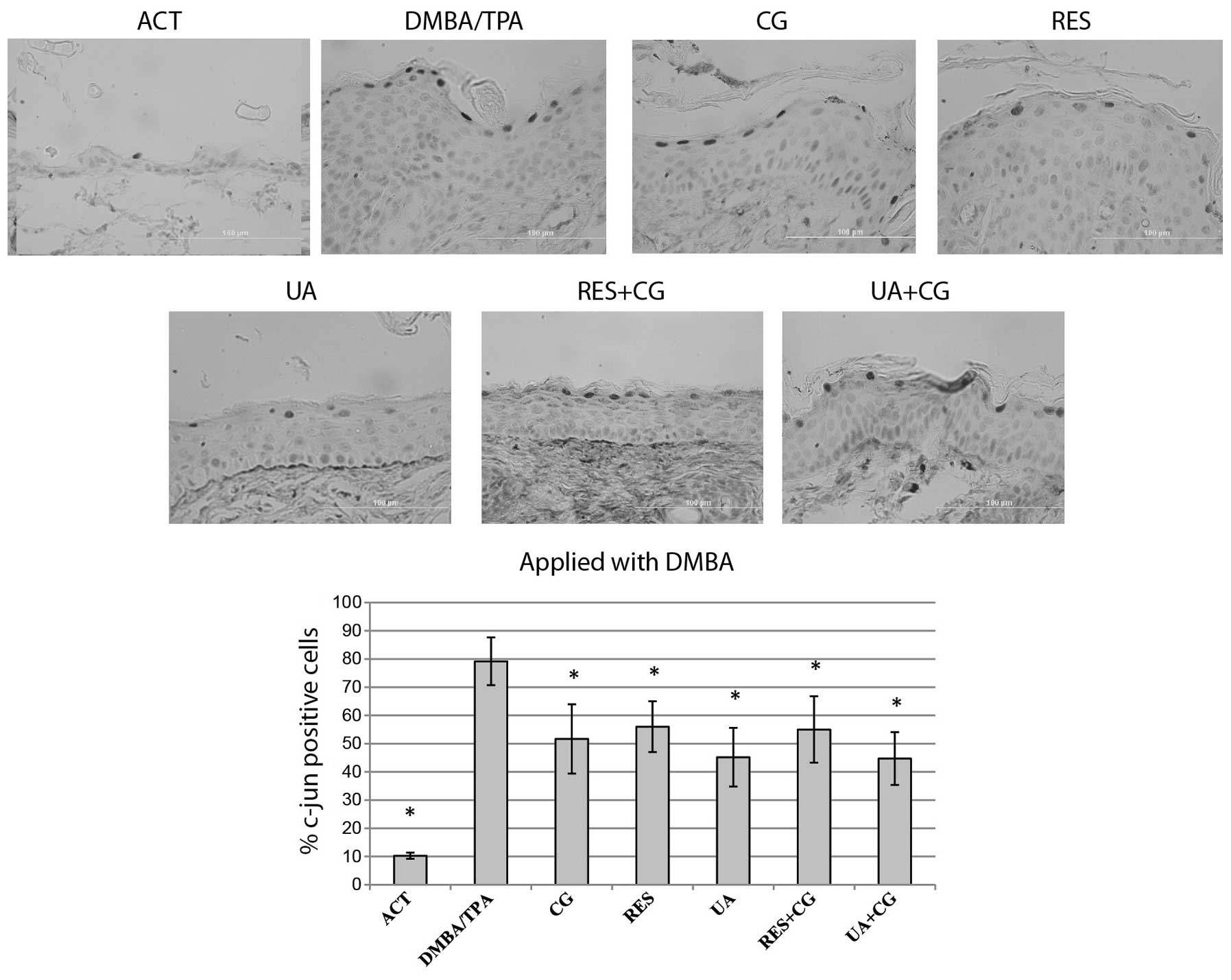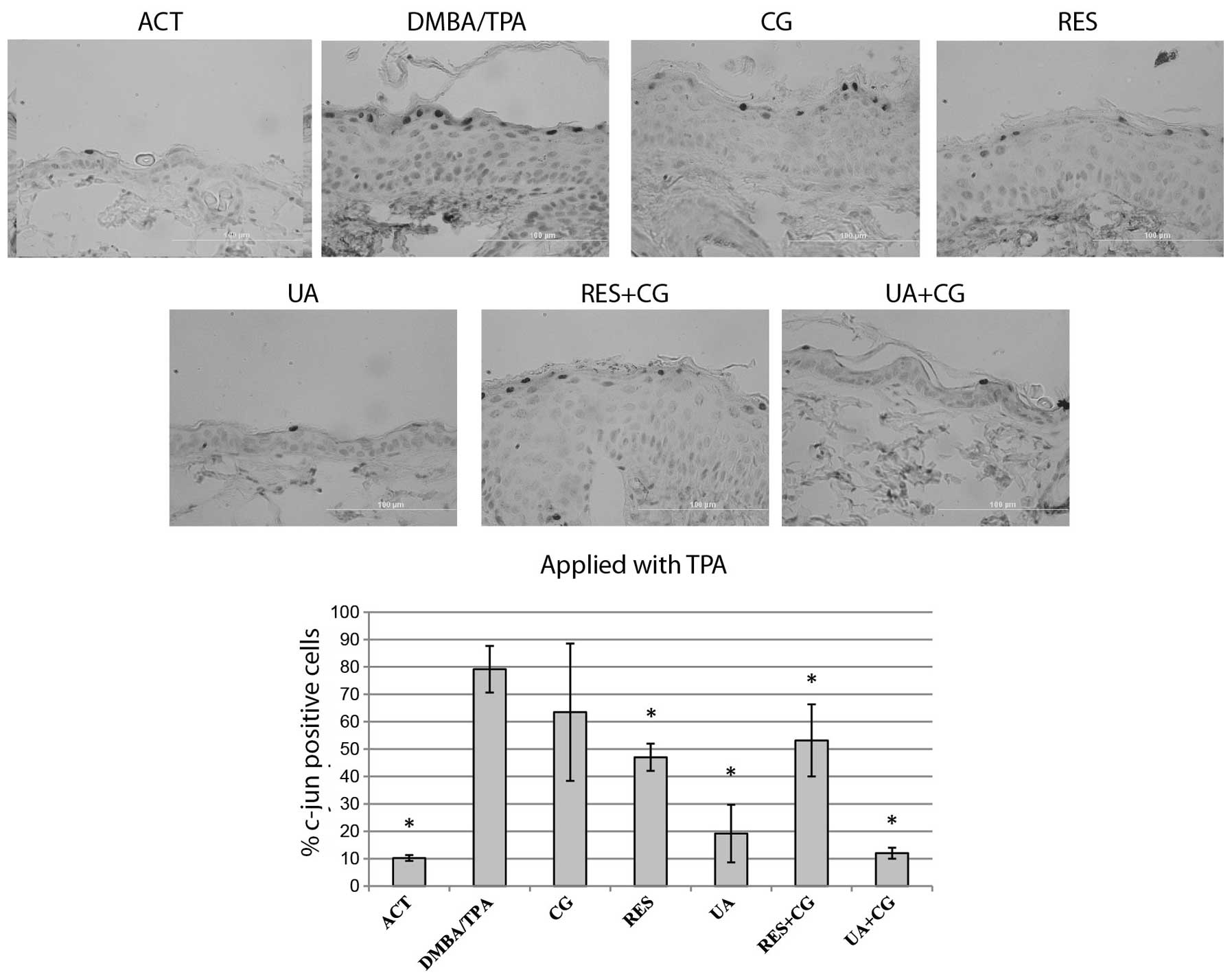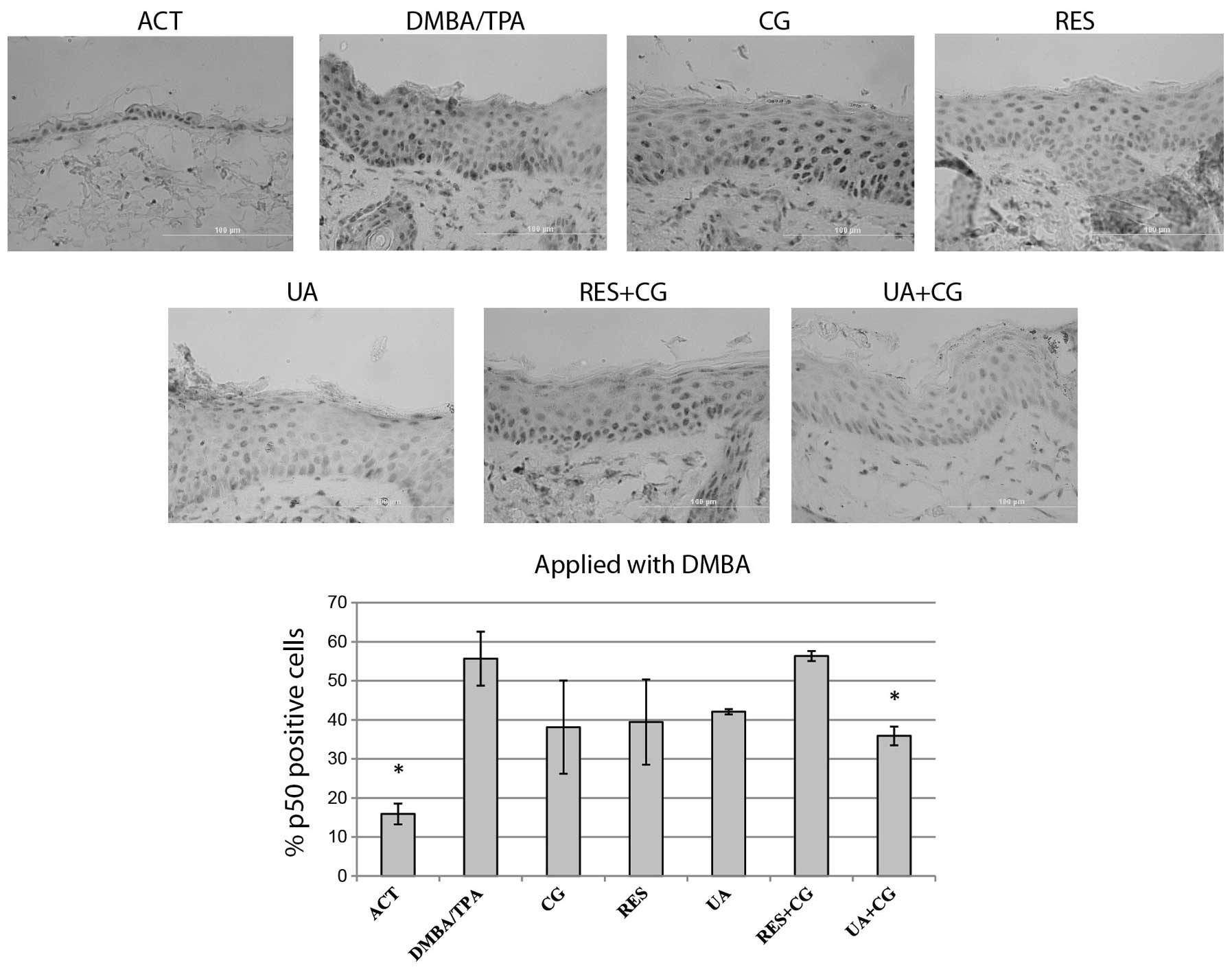|
1
|
Bishop JM: Molecular themes in
oncogenesis. Cell. 64:235–248. 1991. View Article : Google Scholar : PubMed/NCBI
|
|
2
|
Knudson AG: Hereditary predisposition to
cancer. Ann NY Acad Sci. 833:58–67. 1997. View Article : Google Scholar : PubMed/NCBI
|
|
3
|
Boutwell RK: Some biological aspects of
skin carcinogenisis. Prog Exp Tumor Res. 4:207–250. 1964.PubMed/NCBI
|
|
4
|
Slaga TJ: Cancer: etiology, mechanisms,
and prevention - a summary. Carcinog Compr Surv. 5:243–262.
1980.PubMed/NCBI
|
|
5
|
DiGiovanni J: Multistage carcinogenesis in
mouse skin. Pharmacol Ther. 54:63–128. 1992. View Article : Google Scholar : PubMed/NCBI
|
|
6
|
Kemp CJ: Multistep skin cancer in mice as
a model to study the evolution of cancer cells. Semin Cancer Biol.
15:460–473. 2005. View Article : Google Scholar : PubMed/NCBI
|
|
7
|
Perez-Losada J and Balmain A: Stem-cell
hierarchy in skin cancer. Nat Rev Cancer. 3:434–443. 2003.
View Article : Google Scholar : PubMed/NCBI
|
|
8
|
Hanausek M, Ganesh P, Walaszek Z, Arntzen
CJ, Slaga TJ and Gutterman JU: Avicins, a family of triterpenoid
saponins from Acacia victoriae(Bentham), suppress H-ras
mutations and aneuploidy in a murine skin carcinogenesis model.
Proc Natl Acad Sci USA. 98:11551–11556. 2001.PubMed/NCBI
|
|
9
|
Kim EJ, Park H, Kim J and Park JH:
3,3′-diindolylmethane suppresses
12-O-tetradecanoylphorbol-13-acetate-induced inflammation
and tumor promotion in mouse skin via the downregulation of
inflammatory mediators. Mol Carcinog. 49:672–683. 2010.
|
|
10
|
Budunova IV, Perez P, Vaden VR, Spiegelman
VS, Slaga TJ and Jorcano JL: Increased expression of p50-NF-kappaB
and constitutive activation of NF-kappaB transcription factors
during mouse skin carcinogenesis. Oncogene. 18:7423–7431. 1999.
View Article : Google Scholar : PubMed/NCBI
|
|
11
|
Przybyszewski J, Yaktine AL, Duysen E, et
al: Inhibition of phorbol ester-induced AP-1-DNA binding, c-Jun
protein and c-jun mRNA by dietary energy restriction is reversed by
adrenalectomy in SENCAR mouse epidermis. Carcinogenesis.
22:1421–1427. 2001. View Article : Google Scholar : PubMed/NCBI
|
|
12
|
Walaszek Z, Hanausek M and Slaga TJ:
Mechanisms of chemoprevention. Chest. 125:S128–S133. 2004.
View Article : Google Scholar
|
|
13
|
Taesotikul T, Dumrongsakulchai W,
Wattanachai N, Navinpipat V, Somanabandhu A and Tassaneeyakul W:
Inhibitory effects of Phyllanthus amarus and its major lignans on
human microsomal cytochrome P450 activities: evidence for CYP3A4
mechanism-based inhibition. Drug Metab Pharmacokinet. 26:154–161.
2011. View Article : Google Scholar
|
|
14
|
Kimura Y, Ito H, Ohnishi R and Hatano T:
Inhibitory effects of polyphenols on human cytochrome P450 3A4 and
2C9 activity. Food Chem Toxicol. 48:429–435. 2010. View Article : Google Scholar : PubMed/NCBI
|
|
15
|
Suganuma M, Okabe S, Kai Y, Sueoka N,
Sueoka E and Fujiki H: Synergistic effects of (−)-epigallocatechin
gallate with (−)-epicatechin, sulindac, or tamoxifen on
cancer-preventive activity in the human lung cancer cell line PC-9.
Cancer Res. 59:44–47. 1999.
|
|
16
|
Saw CL, Cintron M, Wu TY, et al:
Pharmacodynamics of dietary phytochemical indoles I3C and DIM:
induction of Nrf2-mediated phase II drug metabolizing and
antioxidant genes and synergism with isothiocyanates. Biopharm Drug
Dispos. 32:289–300. 2011. View
Article : Google Scholar : PubMed/NCBI
|
|
17
|
Khafif A, Schantz SP, Chou TC, Edelstein D
and Sacks PG: Quantitation of chemopreventive synergism between
(−)-epigallocatechin-3-gallate and curcumin in normal, premalignant
and malignant human oral epithelial cells. Carcinogenesis.
19:419–424. 1998.
|
|
18
|
Vingtdeux V, Dreses-Werringloer U, Zhao H,
Davies P and Marambaud P: Therapeutic potential of resveratrol in
Alzheimer’s disease. BMC Neurosci. 9(Suppl 2): S62008.
|
|
19
|
Bishayee A: Cancer prevention and
treatment with resveratrol: from rodent studies to clinical trials.
Cancer Prev Res. 2:409–418. 2009. View Article : Google Scholar : PubMed/NCBI
|
|
20
|
Das M and Das DK: Resveratrol and
cardiovascular health. Mol Aspects Med. 31:503–512. 2010.
View Article : Google Scholar : PubMed/NCBI
|
|
21
|
Brasnyo P, Molnar GA, Mohas M, et al:
Resveratrol improves insulin sensitivity, reduces oxidative stress
and activates the Akt pathway in type 2 diabetic patients. Br J
Nutr. 106:383–389. 2011. View Article : Google Scholar : PubMed/NCBI
|
|
22
|
Howells LM, Berry DP, Elliott PJ, et al:
Phase I randomized, double-blind pilot study of micronized
resveratrol (SRT501) in patients with hepatic metastases - safety,
pharmacokinetics, and pharmacodynamics. Cancer Prev Res.
4:1419–1425. 2011. View Article : Google Scholar : PubMed/NCBI
|
|
23
|
Patel KR, Brown VA, Jones DJ, et al:
Clinical pharmacology of resveratrol and its metabolites in
colorectal cancer patients. Cancer Res. 70:7392–7399. 2010.
View Article : Google Scholar : PubMed/NCBI
|
|
24
|
Walaszek Z, Szemraj J, Narog M, et al:
Metabolism, uptake, and excretion of a D-glucaric acid salt and its
potential use in cancer prevention. Cancer Detect Prev. 21:178–190.
1997.PubMed/NCBI
|
|
25
|
Yoshimi N, Walaszek Z, Mori H, Hanausek M,
Szemraj J and Slaga TJ: Inhibition of azoxymethane-induced rat
colon carcinogenesis by potassium hydrogen D-glucarate. Int J
Oncol. 16:43–48. 2000.PubMed/NCBI
|
|
26
|
Hanausek M, Walaszek Z and Slaga TJ:
Detoxifying cancer causing agents to prevent cancer. Integr Cancer
Ther. 2:139–144. 2003. View Article : Google Scholar : PubMed/NCBI
|
|
27
|
Abou-Issa H, Moeschberger M, el-Masry W,
Tejwani S, Curley RW Jr and Webb TE: Relative efficacy of glucarate
on the initiation and promotion phases of rat mammary
carcinogenesis. Anticancer Res. 15:805–810. 1995.PubMed/NCBI
|
|
28
|
Huang MT, Ho CT, Wang ZY, et al:
Inhibition of skin tumorigenesis by rosemary and its constituents
carnosol and ursolic acid. Cancer Res. 54:701–708. 1994.PubMed/NCBI
|
|
29
|
De Angel RE, Smith SM, Glickman RD,
Perkins SN and Hursting SD: Antitumor effects of ursolic acid in a
mouse model of postmenopausal breast cancer. Nutr Cancer.
62:1074–1086. 2010.PubMed/NCBI
|
|
30
|
Shan JZ, Xuan YY, Zheng S, Dong Q and
Zhang SZ: Ursolic acid inhibits proliferation and induces apoptosis
of HT-29 colon cancer cells by inhibiting the EGFR/MAPK pathway. J
Zhejiang Univ Sci B. 10:668–674. 2009. View Article : Google Scholar : PubMed/NCBI
|
|
31
|
Kassi E, Papoutsi Z, Pratsinis H,
Aligiannis N, Manoussakis M and Moutsatsou P: Ursolic acid, a
naturally occurring triterpenoid, demonstrates anticancer activity
on human prostate cancer cells. J Cancer Res Clin Oncol.
133:493–500. 2007. View Article : Google Scholar
|
|
32
|
Kassi E, Sourlingas TG, Spiliotaki M, et
al: Ursolic acid triggers apoptosis and Bcl-2 downregulation in
MCF-7 breast cancer cells. Cancer Invest. 27:723–733. 2009.
View Article : Google Scholar : PubMed/NCBI
|
|
33
|
Fischer SM, Pavone A, Mikulec C,
Langenbach R and Rundhaug JE: Cyclooxygenase-2 expression is
critical for chronic UV-induced murine skin carcinogenesis. Mol
Carcinog. 46:363–371. 2007. View
Article : Google Scholar : PubMed/NCBI
|
|
34
|
Lederle W, Depner S, Schnur S, et al: IL-6
promotes malignant growth of skin SCCs by regulating a network of
autocrine and paracrine cytokines. Int J Cancer. 128:2803–2814.
2011. View Article : Google Scholar : PubMed/NCBI
|
|
35
|
Ullevig SL, Zhao Q, Zamora D and Asmis R:
Ursolic acid protects diabetic mice against monocyte dysfunction
and accelerated atherosclerosis. Atherosclerosis. 219:409–416.
2011. View Article : Google Scholar : PubMed/NCBI
|
|
36
|
Young MR, Li JJ, Rincon M, et al:
Transgenic mice demonstrate AP-1 (activator protein-1)
transactivation is required for tumor promotion. Proc Natl Acad Sci
USA. 96:9827–9832. 1999. View Article : Google Scholar : PubMed/NCBI
|
|
37
|
Thompson EJ, MacGowan J, Young MR, Colburn
N and Bowden GT: A dominant negative c-jun specifically blocks
okadaic acid-induced skin tumor promotion. Cancer Res.
62:3044–3047. 2002.PubMed/NCBI
|
|
38
|
Kowalczyk MC, Walaszek Z, Kowalczyk P,
Kinjo T, Hanausek M and Slaga TJ: Differential effects of several
phytochemicals and their derivatives on murine keratinocytes in
vitro and in vivo: implications for skin cancer prevention.
Carcinogenesis. 30:1008–1015. 2009. View Article : Google Scholar : PubMed/NCBI
|
|
39
|
Shahin V, Ludwig Y, Schafer C, Nikova D
and Oberleithner H: Glucocorticoids remodel nuclear envelope
structure and permeability. J Cell Sci. 118:2881–2889. 2005.
View Article : Google Scholar : PubMed/NCBI
|
|
40
|
Thompson S and Slaga TJ: The effects of
dexamethasone on mouse skin initiation and aryl hydrocarbon
hydroxylase. Eur J Cancer. 12:363–370. 1976. View Article : Google Scholar : PubMed/NCBI
|
|
41
|
Baynes RE, Halling KB and Riviere JE: The
influence of diethyl-m-toluamide (DEET) on the percutaneous
absorption of permethrin and carbaryl. Toxicol Appl Pharmacol.
144:332–339. 1997. View Article : Google Scholar : PubMed/NCBI
|
|
42
|
Baynes RE, Brownie C, Freeman H and
Riviere JE: In vitro percutaneous absorption of benzidine in
complex mechanistically defined chemical mixtures. Toxicol Appl
Pharmacol. 141:497–506. 1996. View Article : Google Scholar : PubMed/NCBI
|
|
43
|
Williams AC and Barry BW: Penetration
enhancers. Adv Drug Deliv Rev. 56:603–618. 2004. View Article : Google Scholar
|
|
44
|
Banerjee S, Bueso-Ramos C and Aggarwal BB:
Suppression of 7,12-dimethylbenz(a)anthracene-induced
mammary carcinogenesis in rats by resveratrol: role of nuclear
factor-kappaB, cyclooxygenase 2, and matrix metalloprotease 9.
Cancer Res. 62:4945–4954. 2002.PubMed/NCBI
|
|
45
|
Cui X, Jin Y, Hofseth AB, et al:
Resveratrol suppresses colitis and colon cancer associated with
colitis. Cancer Prev Res. 3:549–559. 2010. View Article : Google Scholar : PubMed/NCBI
|
|
46
|
Harper CE, Patel BB, Wang J, Arabshahi A,
Eltoum IA and Lamartiniere CA: Resveratrol suppresses prostate
cancer progression in transgenic mice. Carcinogenesis.
28:1946–1953. 2007. View Article : Google Scholar : PubMed/NCBI
|
|
47
|
George J, Singh M, Srivastava AK, et al:
Resveratrol and black tea polyphenol combination synergistically
suppress mouse skin tumors growth by inhibition of activated MAPKs
and p53. PLoS One. 6:e233952011. View Article : Google Scholar : PubMed/NCBI
|
|
48
|
Kapadia GJ, Azuine MA, Tokuda H, et al:
Chemopreventive effect of resveratrol, sesamol, sesame oil and
sunflower oil in the Epstein-Barr virus early antigen activation
assay and the mouse skin two-stage carcinogenesis. Pharmacol Res.
45:499–505. 2002. View Article : Google Scholar
|
|
49
|
Kowalczyk MC, Kowalczyk P, Tolstykh O,
Hanausek M, Walaszek Z and Slaga TJ: Synergistic effects of
combined phytochemicals and skin cancer prevention in SENCAR mice.
Cancer Prev Res. 3:170–178. 2010. View Article : Google Scholar : PubMed/NCBI
|



